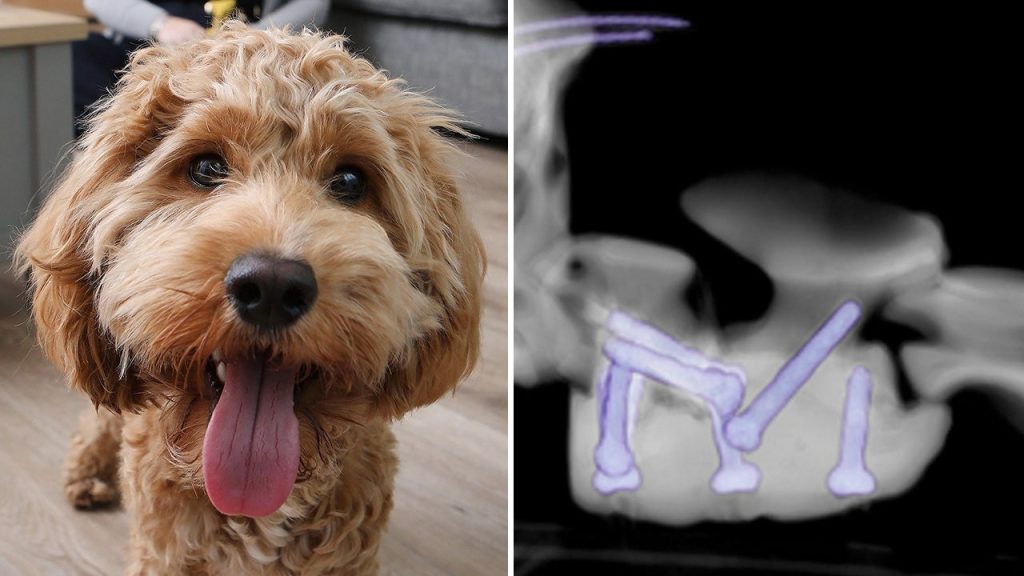Arthur, a six-month-old cockapoo from Wales, was born with a spinal abnormality that required emergency surgery. After collapsing and being unable to move his limbs, he was taken to the Chestergates Veterinary Hospital where exams and scans revealed his spine was not connected properly. This caused a loss of function in his limbs, making surgery the only option. Arthur underwent a successful operation where surgeons used 3D-printed spinal screws and surgical cement to stabilize his spine. Lead veterinary surgeon Rocio Orlandi explained that Arthur’s condition was potentially life-threatening due to bony abnormalities close to the brainstem, but the use of 3D-printed technology significantly improved his prognosis.
Following the surgery, Arthur was discharged from the hospital just three days later and was already showing signs of improvement. His owner, Natalie Jones, mentioned that his tail was wagging and he was starting to play and act like a normal puppy again. The use of 3D-printed spinal screws proved to be a life-changing procedure for Arthur, allowing him to live a healthier and happier life. Jones expressed her gratitude for the successful surgery and the opportunity to watch her beloved pet thrive once again. The innovative use of technology in veterinary medicine has made a significant impact on pets like Arthur, offering new possibilities for treating complex conditions that were once deemed life-threatening.
Jones recounted the terrifying ordeal of seeing her puppy collapse and struggle to move his limbs, prompting her to seek immediate medical attention for Arthur. The diagnosis of a spinal abnormality that required urgent surgery was a worrying time for Jones, but the successful operation with 3D-printed spinal screws brought new hope for Arthur’s recovery. The lead veterinary surgeon emphasized the importance of using advanced technology in complex surgeries like Arthur’s to enhance accuracy and improve outcomes. Arthur’s story serves as a reminder of the incredible advancements in veterinary medicine that are saving the lives of beloved pets and offering them a second chance at a normal, healthy life.
The emotional journey of Arthur’s surgery and recovery resonated with Jones, who expressed her relief and joy at seeing her puppy regain his playful and lively nature. The long road to recovery was filled with uncertainty and worry, but the positive progress Arthur showed in the days following the surgery was a testament to his resilience and the skill of the veterinary team. The use of 3D-printed spinal screws not only stabilized Arthur’s spine but also enhanced his overall prognosis, giving him a brighter future. Jones’ dedication to Arthur’s well-being and the expertise of the veterinary team at Chestergates Veterinary Hospital played a crucial role in the successful outcome of the surgery, highlighting the importance of early intervention and advanced technology in addressing complex medical conditions in pets.
As Arthur continues to recover and enjoy his newfound mobility and vitality, his story serves as an inspiration for pet owners and veterinarians alike. The innovative use of 3D-printed technology in Arthur’s surgery showcases the potential for cutting-edge advancements in veterinary medicine to transform the lives of animals in need of complex interventions. Jones’ dedication to Arthur’s care and the expertise of the veterinary team highlight the collaborative effort required to achieve successful outcomes in challenging cases. Arthur’s journey from a life-threatening condition to a successful surgery and recovery is a testament to the power of modern veterinary medicine in providing hope and healing for beloved pets like him.


